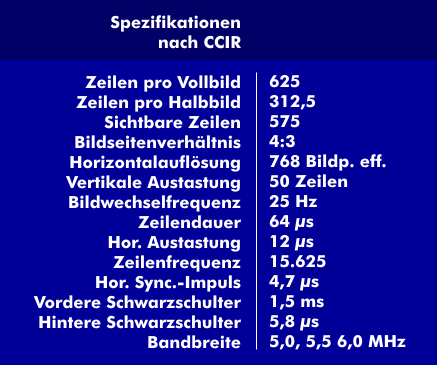national television system committee (NTSC)
The NTSC color television standard was developed in the USA in the 1950s and is present in North American countries and in the Pacific region. This standard works with 525 lines and 30 frames, correctly with 29.97 frames or with a refresh rate of 29.97002618 Hz.
Like PAL, the NTSC method recognizes the luminance signal (Y) and the chrominance signal (C). In contrast to PAL, the chrominance signal consists of the color components "I" and "Q" , which occupy a different position in the color triangle than "U" and "V" from PAL. These two color components are modulated in a simple quadrature modulation, as amplitude modulation with carrier suppression.
The screen scanning is the same as PAL, namely interlaced line by line and interlaced frame by frame. The NTSC line has a duration of 63.5 µs, the full frame a duration of 33.37 ms. Due to picture changes, blanking interval and synchronous pulses, a total of 480 lines are visible. This value corresponds to the resolution ofVGA (480 x 640).
NTSC works in the audio range like PAL with frequency modulation( FM). The color carrier is at 3.579545 MHz.

